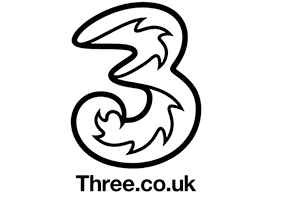Three UK has completed a number of key steps in its network improvement programme, as part of a wider £2bn+ infrastructure investment, in preparation for the advent of 5G.
Three UK announced its commitment to invest over £2 billion in network infrastructure as it rolls out 5G.
As part of its network upgrade the telecoms operator has:
- acquired the UK’s leading 5G spectrum portfolio
- signed an agreement for the rollout of new cell site technology to prepare major urban areas for the rollout of 5G devices, as well as enhance the 4G experience
- built a high-capacity dark fibre network, which connects 20 new, energy efficient and highly secure data centres
- deployed a 5G-ready, fully integrated cloud-native core network in the new data centres, which at launch will have an initial capacity of 1.2Tbps, a three-fold increase from today’s capacity
- rolled out carrier aggregation technology on 2,500 sites in busiest areas, improving speeds for customers
Three said its mobile customers are particularly data-hungry, already using 3.5x more data per month than the industry average.
“We have always led on mobile data and 5G is another game-changer. Also described as wireless fibre, 5G delivers a huge increase in capacity together with ultra-low latency. It opens up new possibilities in home broadband and industrial applications, as well as being able to support the rapid growth in mobile data usage. “This is a major investment into the UK’s digital infrastructure. UK consumers have an insatiable appetite for data and 5G unlocks significant capability to meet that demand," stated Dave Dyson, Three's CEO.
Three UK posts 2% revenue growth in 1H18, signs Huawei for 5G
Three UK reported revenue of £1.19 billion for the first half of 2018, up 2% from 1H17.
Customer service margin was £729 million, up 1%, and EBITDA was £364 million, up 7%.
Operational highlights:
Customer service margin was £729 million, up 1%, and EBITDA was £364 million, up 7%.
Operational highlights:
- 6% growth of the active contract customer base; total customer base now 10.1 million
- Contract handset churn at lowest ever level of 1%, a 9% improvement
- Usage per customer of 7.6GB per month, up 10% from 6.9GB
- 84% of customer base using 4G and 75% of data usage on 4G network
- The company secured 20MHz at auction to add to its 5G spectrum portfolio
- The company signed an agreement with SSE to unbundle BT local telephone exchanges to facilitate fibre optic connections of masts to datacentres.
- Three UK is the first UK network to stop selling 3G-only handsets

Ofcom, the official telecoms regulator in the U.K., completed the auction of 190 MHz of spectrum across two frequency bands: 40 MHz in the 2.3 GHz band, which will be used to increase 4G mobile broadband capacity; and 150 MHz in 3.4GHz, which has been earmarked for 5G.
Here are the results:
EE won 40 MHz of 3.4 GHz spectrum at a cost of £302,592,000.
Hutchison 3G UK won 20 MHz of 3.4 GHz spectrum at a cost of £151,296,000.
 Telefónica UK won all 40 MHz of 2.3 GHz spectrum available, at a cost of £205,896,000; and 40 MHz of 3.4 GHz spectrum at a cost of £317,720,000.
Telefónica UK won all 40 MHz of 2.3 GHz spectrum available, at a cost of £205,896,000; and 40 MHz of 3.4 GHz spectrum at a cost of £317,720,000.
Vodafone won 50 MHz of 3.4 GHz spectrum at a cost of £378,240,000.
Airspan Spectrum Holdings, which would have been a new entrant to the UK mobile market, failed to win spectrum in either band.
The total value of the winning bids amounts to £1,355,744,000.
Here are the results:
EE won 40 MHz of 3.4 GHz spectrum at a cost of £302,592,000.
Hutchison 3G UK won 20 MHz of 3.4 GHz spectrum at a cost of £151,296,000.
 Telefónica UK won all 40 MHz of 2.3 GHz spectrum available, at a cost of £205,896,000; and 40 MHz of 3.4 GHz spectrum at a cost of £317,720,000.
Telefónica UK won all 40 MHz of 2.3 GHz spectrum available, at a cost of £205,896,000; and 40 MHz of 3.4 GHz spectrum at a cost of £317,720,000.Vodafone won 50 MHz of 3.4 GHz spectrum at a cost of £378,240,000.
Airspan Spectrum Holdings, which would have been a new entrant to the UK mobile market, failed to win spectrum in either band.
The total value of the winning bids amounts to £1,355,744,000.










